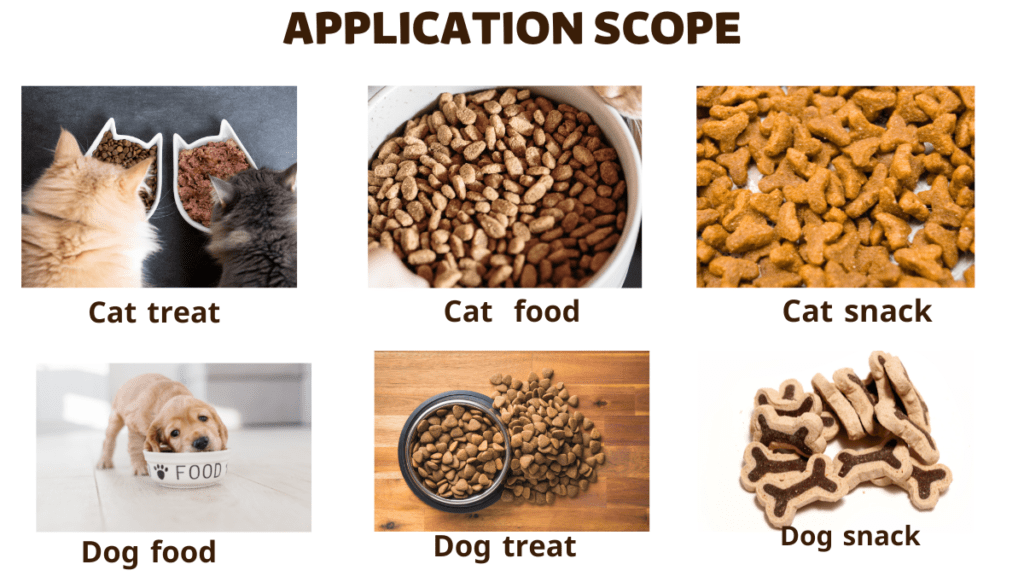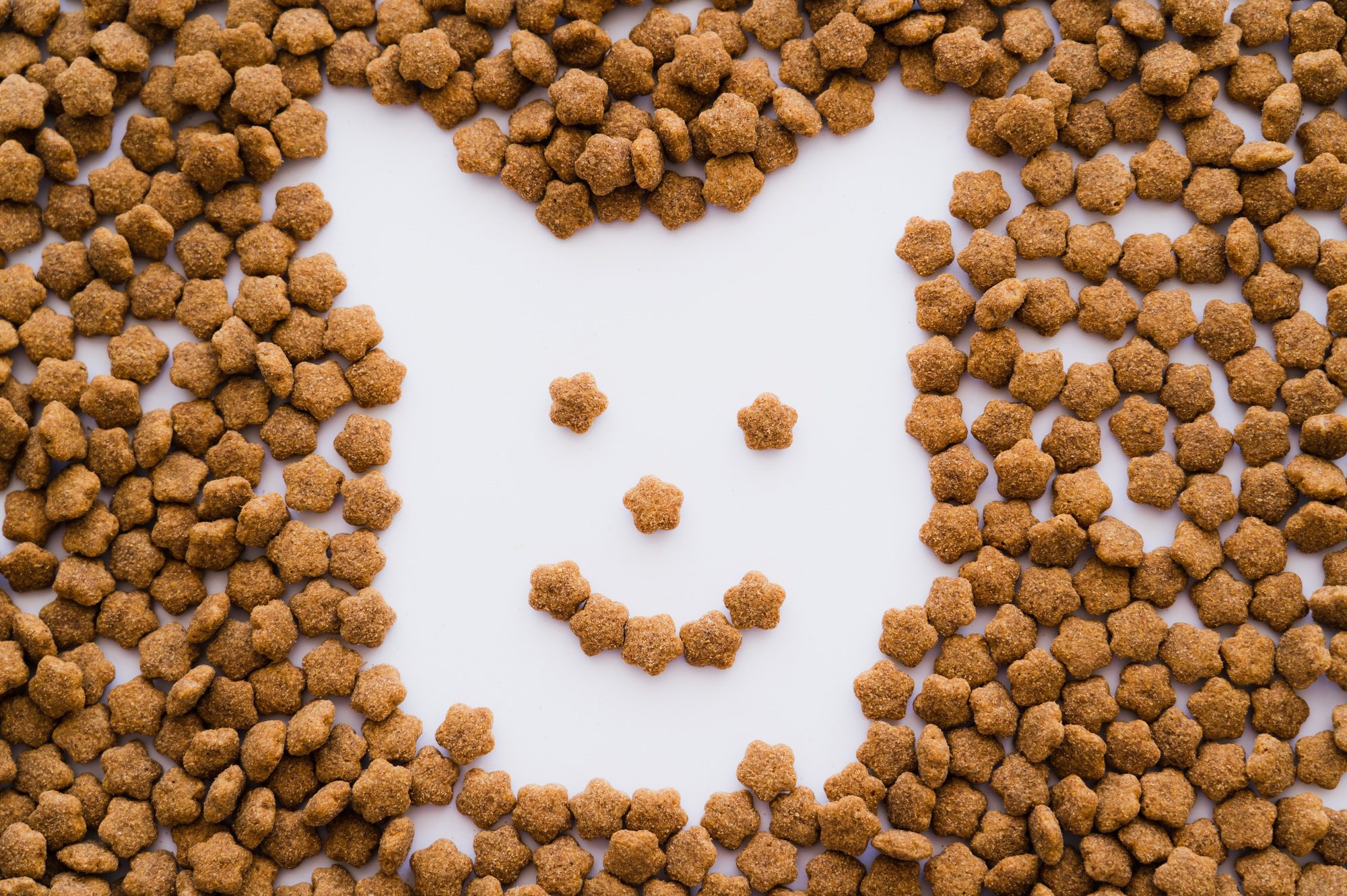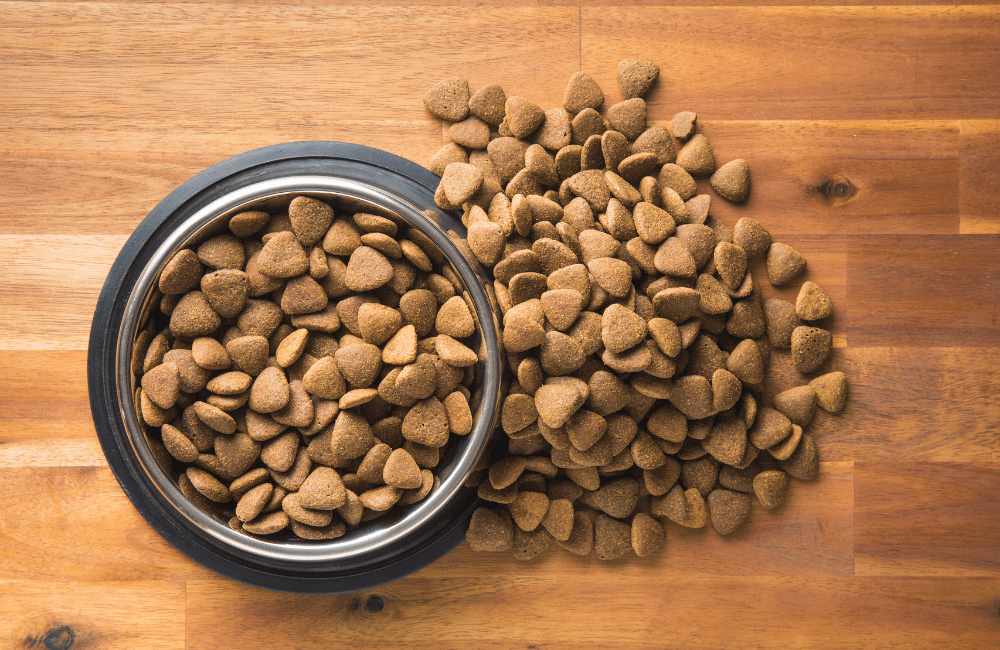Feed Appetizers in Animal Nutrition
Introduction
Feed appetizers, also known as attractants or appetite enhancers, are a category of specialized additives added to animal feed to improve palatability, stimulate appetite, increase feed intake, promote digestion, absorption, and utilization of nutrients. There are various types of feed appetizers, primarily including flavor enhancers (aromatic compounds, spices) and taste modifiers (sweeteners, souring agents, umami enhancers, salt, and spices).
Differentiating Flavor Enhancers and Taste Modifiers
Flavor refers to a unique sensory experience resulting from the combination of taste and aroma. Taste includes sweet, sour, bitter, salty sensations, and the overall perception of specific food qualities. Aroma encompasses a wider range and is perceived through olfaction. The composition of taste modifiers includes aromatic components (impacting smell), taste components (e.g., sweeteners for taste), and taste-modulating components (raising or lowering taste thresholds). Products lacking taste components and taste-modulating parts are categorized as flavor enhancers. Flavor enhancers consist of volatile substances with short shelf lives and susceptibility to loss during processing, yet they maintain specific feed odors and can mask undesirable smells. Taste modifiers not only offer the advantages of flavor enhancers—imparting unique flavors and masking unpleasant odors—but also improve palatability, elevate feed intake, have longer retention times, and remain stable during processing, thus offering more benefits compared to flavor enhancers.
Physiological Basis of Feed Appetizer Application
1. Smell and Taste as Food Cues
Feed appetizers can be defined as sensory additives used to enhance and improve the natural taste and aroma of feed, promoting intake, growth, and development based on physiological principles such as smell and taste. While poultry have limited olfactory senses, mammals exhibit varying degrees of olfactory sensitivity. Poultry have lower taste sensitivity compared to humans, but pigs exhibit a taste sensitivity twice that of humans. Taste encompasses five sensations: sour, sweet, bitter, spicy, and salty, while olfaction involves countless varieties without a unified classification system yet. Taste buds determine sensations, distributed differently across animal species resulting in varied perceptions (refer to Table 1). Combinations of smell and taste contribute distinct characteristics to each food item, making these cues significant in the animal’s anticipation of familiar food items.
Table 1: Taste Bud Counts in Different Animals
| Animal | Average Taste Bud Count |
| Fish | 100,000 |
| Chicken | 20 |
| Cattle | 25,000 |
| Dogs | 1,700 |
| Pigs | 15,000 |
| Cats | 470 |
2. Animal Feeding Behavior Selection
Studies reveal that food cues provide animals with initial cues to determine whether to consume. For mature animals, unfamiliar scents and tastes are compared to those of previously encountered foods. If the aroma and taste match those of nutritionally beneficial food, consumption increases; otherwise, consumption decreases. The principle guiding animal feeding choices is minimizing risks. It’s evident that animals utilize physiological responses following consumption for evaluating food’s quality and memory association, using flavors as cues or indicators.
By understanding the physiological mechanisms of smell and taste and their impact on animal feeding behavior, feed appetizers can be strategically employed to improve feed intake, growth, and overall animal well-being.
3.Flavor Preferences in Animals
Some animals’ preferences for different flavors are measured using a “preference index.” Experimental results show that cheese flavor has a preference index of 1.501.60 in suckling piglets and piglets; milk/ vanilla flavor is 1.401.50; red fruit flavor is 1.201.38; green fruit flavor is 1.111.20; and fennel flavor is 1.20. It can be observed that cheese flavor is not only familiar as the taste of mother’s milk for piglets but is also a favored flavor by them. Research results indicate that birds can remember odors associated with danger or stress (such as the smell of chicken blood or cat odor), but their reactions to other odors are inconsistent.
4.Sensitivity to Various Tastes in Animals
Suckling piglets have a lasting memory of the taste of mother’s milk, and as they grow older, their flavor preferences gradually change. Adult pigs might prefer citrus, fresh meat, honey, and fermented (sour) flavors. Suckling piglets also prefer fish emulsion and organic acids, but they reject meat and bone meal, alfalfa meal, chemical substances, and heavy metals. Chickens have some taste perception but underdeveloped sense of smell. Currently, garlic is a common taste enhancer for chickens, promoting appetite and providing antimicrobial effects. Cattle show a preference for sweet and volatile fatty acid flavors, especially calves, whereas synthetic flavors have no effect. Calves’ feed often includes a milk flavor, and anise reduces cattle’s palatability, while honey flavor enhances it. Sheep tolerate bitterness better than cattle, and while they prefer honey flavor less intensely than cattle do, they don’t have a special preference for sour tastes. Cod fish have preferences for chocolate, cheese, milk, and fish flavors; fish attractants differ from those for other livestock, with amino acids being a strong olfactory stimulant for fish, though differences exist among fish species. Currently known amino acids like alanine, glycine, arginine, and proline have appetite-stimulating effects for most fish.
Cats won’t eat powdered feed but will consume pelleted, pasted, or gelled rations. Generally, they prefer gel-like rations. Sugars enhance dogs’ acceptance of feed but not cats’. Cats are sensitive to bitterness and will refuse to eat it. Both dogs and cats reject food containing 0.1% saccharin, yet dogs will consume 10% sucrose solution, while cats refuse any concentration of sucrose solution. Dogs are attracted to somewhat putrid-smelling food and also like fresh flavors. Neither dogs nor cats like to eat food lacking essential amino acids.

Quality Standards and Requirements for Feed Attractants
Feed attractants need to possess strong characteristics that match specific animal breeds, ages, and taste preferences. They should be easily controllable in terms of concentration and have good stability to withstand various processing, transportation, and storage factors. Compatibility with feed ingredients and other additives is essential, with no antagonistic effects. Uniformity and consistency are important to avoid segregation in mixed feed. They must also be safe, leaving minimal residues in animal products. All natural and synthetic flavors and solvents used in attractant production must adhere to the hygiene standards for food additives set by the People’s Republic of China. Quality of feed attractants can be controlled through the following indicators:
Appearance: Visual quality control indicator, compared between production samples and standard samples under appropriate lighting conditions.
Aroma: Sensory indicator, evaluated by experienced individuals familiar with aromas and flavors, through sensory assessment of production samples, standard samples, and their dilutions.
Absorbance: Indicator controlling turbidity, used for attractants with milk turbidity properties. A specified concentration of attractant solution can be tested using a spectrophotometer under defined conditions; absorbance indicators generally have a range.
Particle Size: Indicator controlling the diameter of powder attractant particles. A range can be defined, along with the minimum percentage of particles within that range in the attractant, determined using a biological microscope and micrometer.
Moisture Content: Excessive moisture can lead to agglomeration, affecting loose, free-flowing properties.
Free Flowing: Powder attractant placed in a dry, stoppered glass bottle and shaken should not stick to the walls.
Heavy Metals (Lead Equivalent): Food safety indicator, specifying a permissible maximum limit.
Arsenic: Food safety indicator, specifying a permissible maximum limit. Detection method follows GB8451.
Bacterial Criteria: Food safety and hygiene indicator, mainly controlling the quantity of miscellaneous bacteria and coliforms. The indicator may set the maximum allowable bacterial count in a dilution of the attractant solution of several milliliters. Detection methods follow GB4789.2 and GB4789.3.
Heat Stability: Good heat stability withstands granulation, heat pressing, and other processing without significant loss of flavor.
Volatile and Stability: Feed attractants should have a certain degree of volatility and stability (shelf life, generally one year). They should not lose flavor during feed processing, pelleting, and storage, maintaining their effectiveness. They should also have a certain shelf life after mixing with feed (usually one month).
Effectiveness: They should enhance feed palatability, increase animal appetite, improve feed intake and daily weight gain, and even improve feed conversion when the feed itself is well formulated.
Physical and Chemical Standards: Quality should be stable, uniform and consistent within each batch and between different batches. Solid products shouldn’t layer or clump, requiring small particle size and moisture resistance. Good chemical stability implies no chemical reactions with other components in feed, no rapid self-oxidation and decomposition, and no generation of bad odors or flavors.

Factors Affecting the Efficacy of Feed Attractants
Physical Factors
1.1 Particle Size
The smaller the processing particles of the attractant, the more contact it has with the feed particles, enhancing its effect. Smaller feed particles with added attractant have a larger surface area for scent diffusion, resulting in a more concentrated aroma.
1.2 Temperature
Higher temperatures accelerate the release of attractant scent but reduce its persistence. Lower temperatures slow scent release, leading to better persistence. The pelletization process involves high temperatures of 80°C to 90°C generated by high pressure, followed by rapid cooling using vacuum, which can result in the loss of attractant scent.
1.3 Humidity
High humidity hampers the release of attractant scent, manifesting as insufficient aroma.
1.4 Pressure
When the attractant is mixed with feed for pelletization, tighter compaction and smaller gaps during pellet formation hinder scent diffusion.
2.Chemical Factors
Mold inhibitors, chemical preservatives, medicines, minerals, choline, and urea affect the flavor of feed. Poor-smelling raw materials, oxidation, mold, and spoilage of ingredients also impact attractant efficacy.
3.Animal Species, Age, and Health
Attractants are more effective for pigs, cattle, and pets, while their effect on poultry and fish is relatively weaker due to differences in olfactory and taste functions. Generally, attractants are most effective for piglets and broiler chickens up to 4 weeks of age, with diminishing effects as animals age. Animals’ health directly affects attractant efficacy; infections and parasites disrupt digestion, enzyme breakdown, and absorption, reducing the effectiveness of attractants.
4.Feed Composition and Interactions
The choice of feed ingredients directly influences feed quality. Excessive use of ingredients like rapeseed meal, cottonseed meal, or oxidized fats, as well as material degradation, affects feed flavor and palatability, which attractants cannot rectify. When feed deteriorates, attractants not only fail to mask the deterioration but can also amplify bad odors and tastes due to their volatilization.
5.Usage of Attractants
Proper usage is crucial. Uniform distribution during mixing is important; combining external and internal methods is recommended. Avoid premixing attractants with antagonistic substances. To ensure scent efficacy, avoid direct contact between attractants and minerals or medicines; it’s best to use plant-based materials for premixing.
Considerations for Attractant Development, Processing, and Use
1.Clearly Identify the Target Audience and Purpose, Understand the Flavor Preferences of Animals’ Use
When the goal is to attract, maintain, or increase food intake, it is necessary to choose attractants with flavors that animals prefer. Combining the effects of smell and taste yields better results.
2.Gain a Better Understanding of Attractant Performance
Users must understand aspects of attractant performance including volatility, lingering scent period, the relationship between dosage and aroma intensity, and production techniques.
3.Follow the Principle of “Familiarity” and Choose Flavors Familiar and Preferred by Animals
When altering attractant products, avoid sudden changes in flavor. Adopt a gradual or transitional approach to prevent animals from rejecting feed with new flavors. Balance traditional preferences and coordinate the relationship between the flavor of the attractant and the psychological perceptions of buyers, ensuring that customers can recognize the reliable quality of the feed by its aroma.
4.Add Attractants While Maintaining Feed Quality
This is particularly crucial for feed producers to fully comprehend. Many feed producers focus solely on nutrition and price in homemade feeds, relying entirely on attractants for palatability. They may overlook certain “deficiencies” in ingredients that attractants cannot compensate for. Ingredients with high levels of toxic or harmful components, such as soybean meal with trypsin inhibitor or fish meal with anti-thiamine factors, often come with unpleasant tastes like bitterness, astringency, spiciness, or numbness. If formulation, selection, processing, and limitations are not considered, attractants cannot effectively fulfill their role.
5.Do Not Attempt to Mask Spoiled, Rancid, or Mold-Contaminated Feeds with Attractants
This can lead to extremely severe consequences for animals. Adding attractants to spoiled ingredients not only fails to mask the issue, but the volatile aroma compounds can exacerbate the unpleasant odors of spoilage. The aroma can magnify the smell of rancid oils in the feed.
6.Avoid Pre-mixing Ingredients with Antagonistic Effects to Attractants
Prevent direct contact between attractants and minerals, medications, etc., to preserve the aromatic function of the attractant in the feed.
7.Treat Attractants as Additives, Following the Same Particle Size Requirements as Other Additives
Smaller processing particles result in increased contact with feed particles, enhancing their effectiveness. Additionally, there are specific requirements for the choice of auxiliary matrix and processing methods during manufacturing.
8.Avoid Excessive Aroma Intensity in Attractants
There’s a misconception in attractant application that stronger aroma is better for promotional purposes. However, this can negatively impact the palatability of the feed.
9.Methods of Addition
In general, liquid or granular attractants can be added at any stage from premixing to pelletization, but the type and composition of the attractant should be considered. The aroma of attractants primarily comes from volatile oxidized compounds, and the rate of oxidation directly affects the duration of attractant effectiveness. Therefore, a combination of medium-duration and long-duration attractants can be used. For pellet feed production, stable heat-resistant attractants are needed. Organic acids can combine with attractants; pellet binders might absorb attractants, affecting their effectiveness. The sequence of attractant addition is also important.
(1) Internal Addition
Begin by premixing a suitable amount of attractant with powdered grains or their by-products at a ratio of 10 or more, ensuring even distribution within the feed. After all nutritional and non-nutritional additives have entered the mixer, introduce the premixed attractant through the feeding port. During pelletization, maintain the lowest temperature and pressure possible while meeting pelletization requirements. This minimizes the loss of attractant aroma and reduces vitamin loss.
(2) External Addition
Due to significant loss of attractants during the pelletization process from high temperature, pressure, and rapid cooling, the “spray scenting technique” is used. This involves spraying attractants into the feed after pellet cooling.
(3) Combined Internal and External Addition
For internal addition, use long-lasting and heat-resistant attractants. For external addition, opt for attractants with temperature resistance up to 60°C and lower prices.
Keywords: attractant usage, animal feeds, flavor preferences, feed quality, palatability, attractant performance, addition methods, aroma intensity, feed production, volatile compounds, animal consumption.













